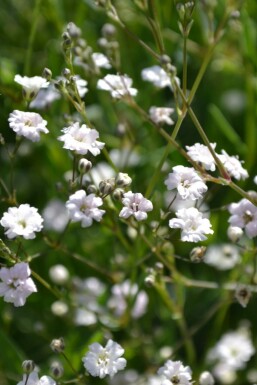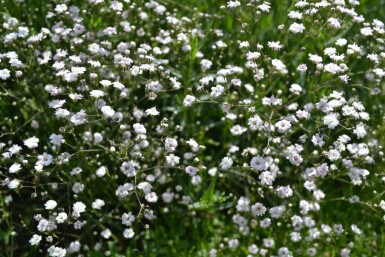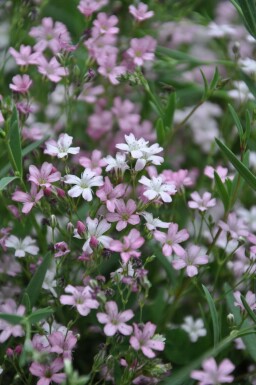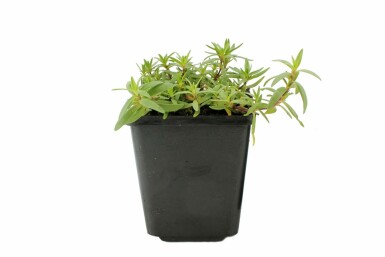

40cm




At Heijnen Plants, we take pride in offering the delicate and airy Gypsophila, commonly known as baby's-breath. This perennial is cherished for its profusion of small, star-shaped flowers in hues of purple, pink, and white, which create a frothy haze of color when in full bloom. The plant is characterized by slender stems and fine, green to grey foliage that provides a soft backdrop, allowing the blooms to truly shine. Gypsophila does not bear fruit, but its ethereal beauty makes it a favored choice for both garden beds and as a staple in floral arrangements.


40cm






100cm




15cm





10cm



Gypsophila, commonly known as baby's-breath or babysbreath, is a charming genus celebrated for its delicate cloud-like clusters of flowers. These plants are a favorite among florists and gardeners alike for their airy texture and graceful appearance. Gypsophila species are versatile and can be used to soften garden borders, enhance group plantings, or create whimsical edges that dance in the breeze. With a blooming season spanning from June to September, they add long-lasting color and interest to any garden setting.
Gypsophila showcases a plethora of features that make it a desirable addition to any landscape:
For optimal growth and display of your Gypsophila, consider these gardening tips:
Embrace the delicate charm and whimsical allure of Gypsophila, commonly known as baby's-breath. With its cloud of tiny, star-like blossoms, this plant infuses grace into any garden space, creating a frothy haze of white that seems to whisper of fairy tales and enchanted meadows. Ideal for softening landscape edges or as a complement to more structured plants, Gypsophila is a favorite for its enduring beauty and effortless elegance.
We would like to provide some tips on how to plant and care for a Gypsophila. By following these tips, you can be sure to enjoy your Gypsophila for a long time.
For optimal growth, Gypsophila should be situated in a location that receives full sun to partial shade. The soil should be well-aerated and {R. well-drained}, which is critical for preventing root rot and other moisture-related issues. While this plant can adapt to a range of soil types, it thrives in a neutral to slightly alkaline pH. The area chosen for planting should offer enough space to accommodate the plant's mature size, ensuring it receives ample light and air circulation, which are vital for maintaining the health and vibrancy of its delicate blooms.
Planting Gypsophila requires a well-drained soil of any type, in a location that receives full sun to partial shade. As this species is pot-grown, gardeners can safely plant it throughout the growing season, avoiding extreme weather conditions like frost. The ideal planting distance should be considered to accommodate its growth habit and to ensure adequate air circulation, which is vital for robust health. Initial watering should be consistent to help establish a strong root system; thereafter, the plant will have moderate water requirements. With its roots settled, Gypsophila will grace borders and group plantings with delicate blooms from summer into early autumn.
For optimal growth and flowering, it is recommended to fertilize Gypsophila twice during the growing season. Apply a balanced, slow-release fertilizer early in the spring to kickstart growth and another application during the summer to sustain blooming and foliage health. Ensure that the fertilizer is well-integrated into the soil surrounding the plants without making direct contact with the stems or foliage to prevent potential damage.
It is crucial to follow the manufacturer's instructions regarding the quantity and frequency of application, as over-fertilization can lead to excessive foliage at the expense of flower production. An appropriate fertilization regime will support the plant's clump-forming growth habit and enhance its delicate, cloud-like blooms. Remember to water the plant after fertilizing to help distribute nutrients into the soil and reduce the risk of root burn.
Gypsophila is a low-maintenance species that generally does not require pruning. However, to encourage a denser and more robust growth, light trimming can be beneficial. After the plant has finished blooming, typically in late summer or early autumn, simply trim back the spent flowers. This can promote a second flush of blooms and keep the plant looking tidy. Since Gypsophila is semi evergreen to deciduous, any dead or damaged stems can be removed in early spring to maintain plant health and aesthetics.
Gypsophila thrives with consistent moisture, particularly during its growing and blooming seasons. It is crucial to ensure that the soil is well-drained to prevent waterlogging, which can be detrimental to the plant's health. Watering should be done when the top inch of the soil feels dry to the touch. This species does not possess drought resistance, emphasizing the need for regular watering schedules without over-saturating the soil. During hot spells or in particularly dry climates, monitoring the soil's moisture levels more frequently will be necessary to maintain optimal growth conditions.
Gypsophila's delicate appearance belies its ruggedness, thriving in well-drained soil and tolerating periods of drought once established. An excellent addition to rock gardens, it also provides a whimsical touch to borders. Its billowy blooms are a florist's staple for adding airy elegance to bouquets. As it matures, the species may benefit from staking to support its frothy clusters of tiny flowers, ensuring they create a stunning visual impact without drooping.
To rejuvenate Gypsophila and maintain its airy elegance in the garden, division is an effective method. This practice is ideally done in the early spring or fall, when the plant is not in active bloom. Carefully lift the plant from the soil, ensuring to preserve as much of the root ball as possible. Once removed, gently tease apart the clumps, selecting robust sections with ample roots attached. Each division should be replanted promptly at the same depth it was growing previously, in well-drained soil, and watered thoroughly to establish. Regular division helps promote vigorous growth and abundant flowering in the following seasons.
Discover the delicate charm of Gypsophila, a plant esteemed for its airy clusters of small, starry flowers that lend a whimsical touch to any setting. With its graceful stems and versatile nature, Gypsophila is an exquisite choice for adding lightness and elegance to gardens and floral arrangements alike.
